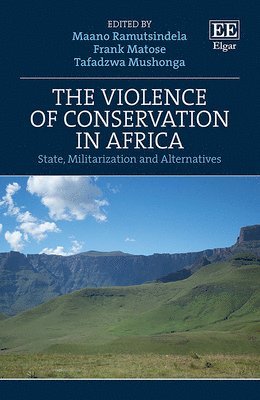
Fler böcker inom
- Format
- Inbunden (Hardback)
- Språk
- Engelska
- Utgivningsdatum
- 2022-01-14
- Förlag
- Edward Elgar Publishing Ltd
- Dimensioner
- 234 x 156 x 20 mm
- Vikt
- ISBN
- 9781800885608
- 542 g
Violence of Conservation in Africa
State, Militarization and Alternatives
Inbunden,
Engelska, 2022-01-14
1839
- Skickas från oss inom 5-8 vardagar.
- Fri frakt över 249 kr för privatkunder i Sverige.
Passar bra ihop
De som köpt den här boken har ofta också köpt Braiding Sweetgrass av Robin Wall Kimmerer (häftad).
Köp båda 2 för 1964 krKundrecensioner
Har du läst boken?
Sätt ditt betyg »
Fler böcker av författarna
-
Land Reform in South Africa
Brent McCusker, William G Moseley, Maano Ramutsindela, William G Moseley
-
Sponsoring Nature
Maano Ramutsindela, Marja Spierenburg, Harry Wels, Maano Ramutsindela, Marja Spierenburg
-
Routledge Handbook of Development and Environment
Brent McCusker, Waquar Ahmed, Maano Ramutsindela, Patricia Solís, Maano Ramutsindela
-
Unfrozen Ground: South Africa's Contested Spaces
Maano Ramutsindela
Övrig information
Edited by Maano Ramutsindela, Professor of Geography, Department of Environmental and Geographical Science, Frank Matose, Co-Director, Environmental Humanities South Centre, University of Cape Town and Tafadzwa Mushonga, Postdoctoral Research Fellow, Centre for the Advancement of Scholarship, University of Pretoria, South Africa
Du kanske gillar
-
Question 7
Richard Flanagan
Häftad -
John and Paul
Ian Leslie
Inbunden -
Empire of AI
Karen Hao
Inbunden -
Orbital
Samantha Harvey
Häftad


